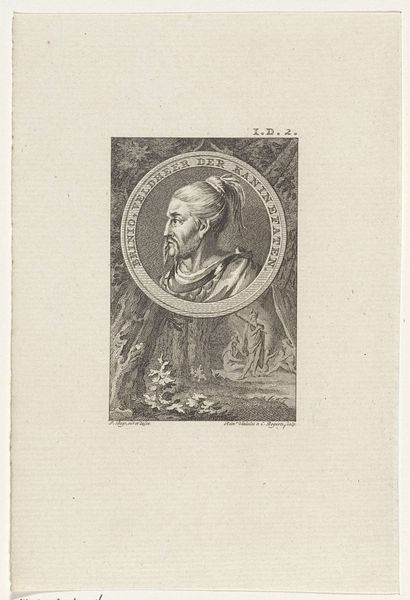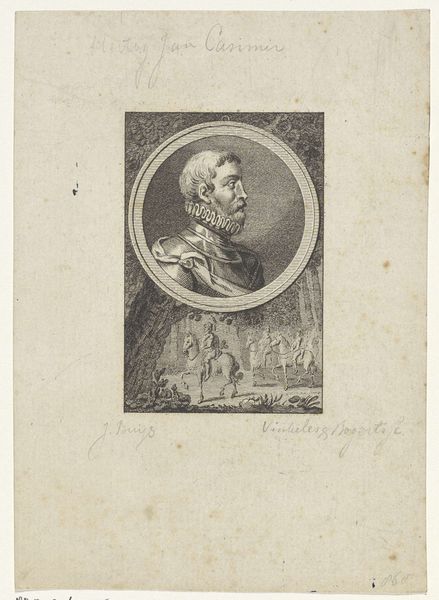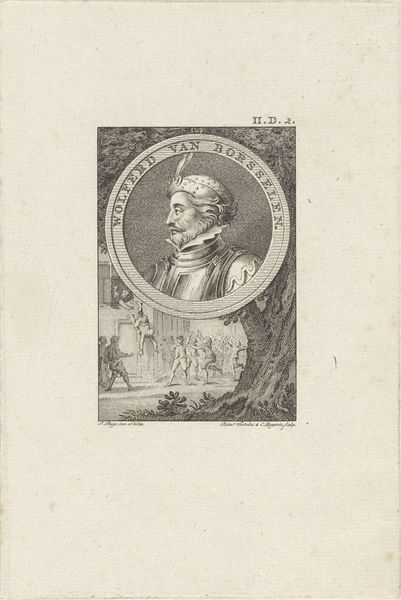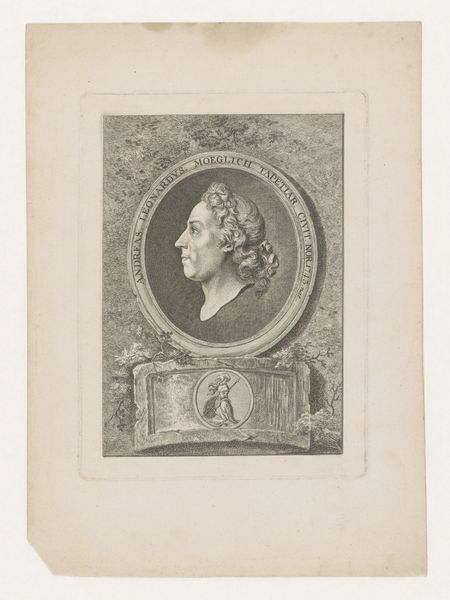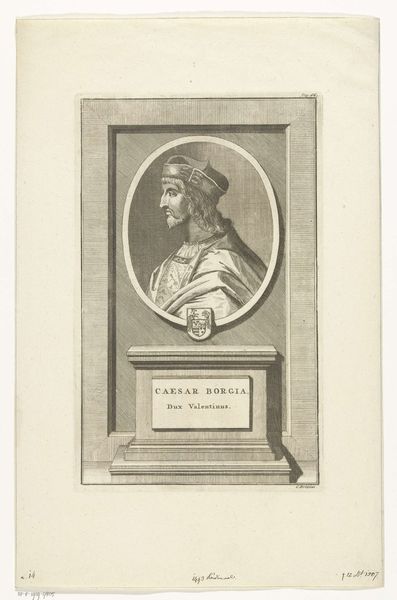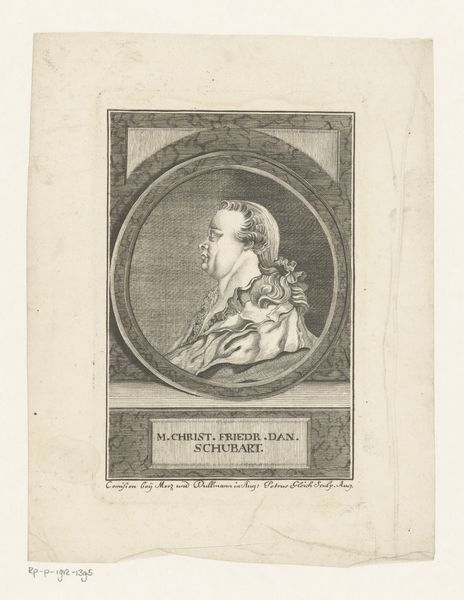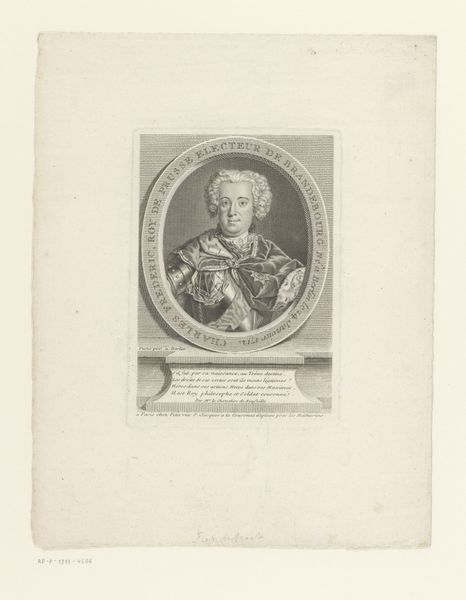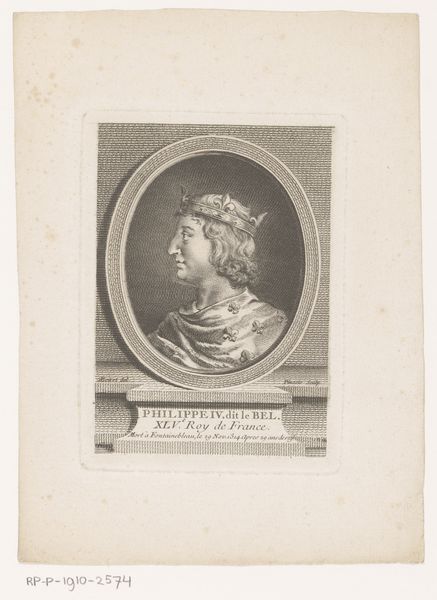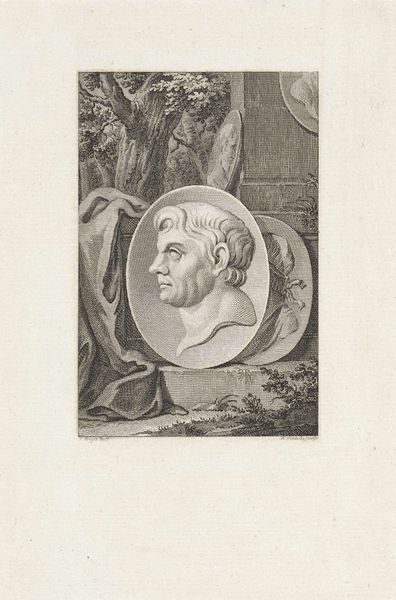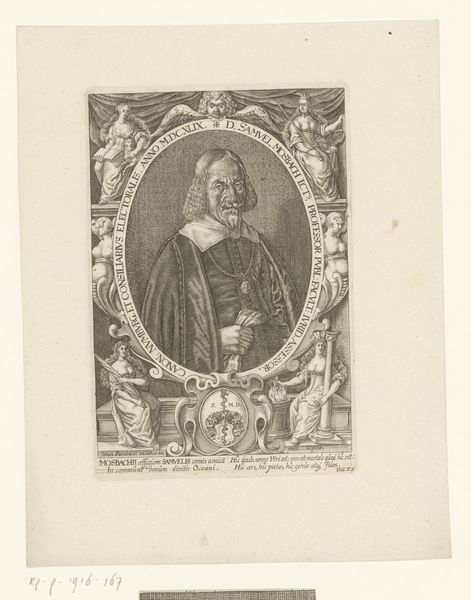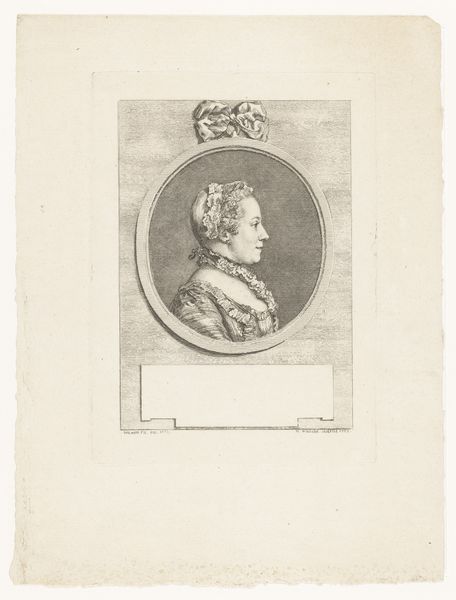
Dimensions: height 168 mm, width 113 mm
Copyright: Rijks Museum: Open Domain
Curator: The portrait we’re examining, made using engraving between 1751 and 1816, is titled "Portret van Jan III van Egmond". Editor: There’s something undeniably somber about the entire composition. It has such rigid framing, it gives the feeling of watching a staged performance frozen in time. Curator: Indeed. It captures Jan III van Egmond in profile, encased within a meticulously rendered oval frame. Look closer and you can see below the portrait, a landscape featuring armed figures surrounding what seems to be a fortress, hinting perhaps at Egmond's military life and role in a siege or battle. Editor: The visual cues, while finely detailed, offer an emotionally ambiguous image. It's this tight balance between the sharp, almost baroque technique and the weighty historical allusions that I find so evocative. The meticulous use of the line, its weight and directionality. This contributes directly to a profound psychological depth. The engraving speaks not only of an external portrayal, but an inner dimension, capturing a facet of humanity which seems universal and timeless. Curator: You are correct to observe this technique. Its very structure directs us to a potential dialogue of power and representation, characteristic of its Baroque roots and yet also indicative of wider discourses around political figureheads and leaders throughout time. Editor: Absolutely, the power resides in its self-aware staging, inviting critical speculation. Jan III stares toward some undefined destiny, away from his lands—that unknown horizon seems less his dominion and more a chasm to traverse. Curator: His position is rather interesting in its symbolic structure; as if placed within two conflicting worlds, as represented by the serene visage set against a background riddled with chaos. Editor: That perfectly encapsulates the viewing experience: walking away, I sense this isn’t just a formal depiction but a powerful symbolic interplay on a wider stage of human endeavor. Curator: I quite agree. It is precisely in this tension that its potency resides. It has the potential to transcend its historical context to resonate profoundly in a timeless and ever relevant manner.
Comments
No comments
Be the first to comment and join the conversation on the ultimate creative platform.
